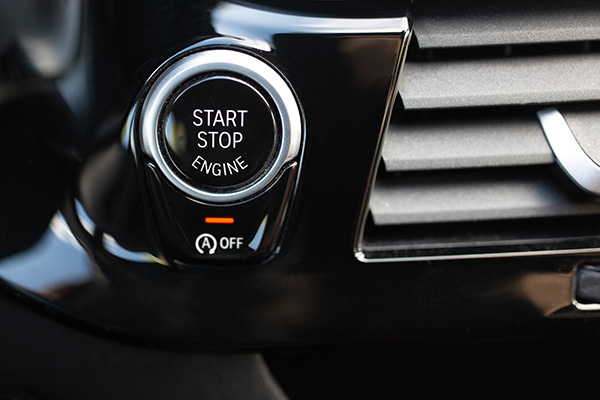
You turn the key, the engine catches for a second, then quits. It feels random, yet there is always a reason. Cold mornings, short trips, and small faults in air, fuel, or spark can all cause a stall right after startup. The good news is that these problems leave clues. With a few focused checks, you can stop the stalls before they turn into a tow.
What “Starts Then Stalls” Usually Points To
Engines need the right mix of air, fuel, and spark, along with a stable idle strategy. A stall in the first five seconds often means the engine did not get enough air past the throttle plate, did not hold fuel pressure, or lost sensor input the computer depends on. Modern engines will try to catch themselves, so a stumble followed by a quit is common. Repeated failures may trigger a light, but even without a light the computer usually stores helpful data.
Airflow Problems: Throttle Body, IAC, and Vacuum Leaks
A dirty throttle body can stick the throttle plate just enough to starve the engine of air at idle. Carbon on the edges raises the chance of a stall after a cold start when airflow is lowest. Some vehicles use an idle air control valve to bypass a small amount of air at idle. If that valve sticks, the engine will catch, then fall on its face. Vacuum leaks create the same lean condition. Split hoses, a loose intake boot, or a stuck open PCV valve will lean the mixture so far that the engine cannot stabilize. A smoke test and a careful cleaning of the throttle body often restore a steady idle.
Fuel Delivery Issues Right After Key On
Fuel pumps prime the system for a second at key on, then run again after the engine starts. A weak pump may build just enough pressure to catch, then pressure falls, and the engine dies. A faulty check valve in the pump can also let pressure bleed off between starts. Clogged filters, restricted injectors, or a stuck fuel pressure regulator produce similar symptoms. On vehicles that sit, stale fuel and moisture add to the trouble. A pressure test during the first seconds after startup tells the story, and an injector balance test can confirm whether fuel is reaching each cylinder evenly.
Ignition and Sensor Inputs That Cut Out
Spark must be strong and well timed. Worn plugs, a failing coil, or corroded plug wires can misfire hard enough to stall the engine. Sensor inputs are just as important. A crankshaft or camshaft sensor that drops out briefly will kill the signal the computer needs to fire the coils and injectors. A failing mass airflow sensor can misreport air, which sends the mixture lean or rich. Coolant temperature sensors that read far colder or hotter than reality can flood the engine with fuel or starve it during the first seconds. Scanning live data during a cold start pinpoints which value goes wrong at the moment of the stall.
Electrical Power and Grounding You Can Check Fast
Low system voltage causes strange behavior at startup. A weak battery may spin the starter but leave little power for modules. Loose or corroded grounds create the same symptom, especially the ground strap between the engine and the body. If accessories reset when the engine dies, or if the starter cranks slower than usual, start with a battery test and a cleaning of major grounds. Many stalls disappear once the voltage is stable and the modules see clean power.
Less Obvious Causes That Still Matter
An EGR valve stuck open lets exhaust dilute the intake charge and will kill a cold idle. An immobilizer that does not read the key chip can allow a short start, then shut the engine off. Water in the intake box after heavy rain can soak the air filter and choke airflow. On drive by wire cars, a throttle body that has lost its learned stop position may need a relearn after a battery change. These are quick to verify once the basics are covered.
What You Can Do Before It Happens Again
If the engine stalls but restarts, a few simple steps can keep you moving until it is inspected. Let the fuel pump prime for a second before cranking. Avoid touching the gas pedal on drive-by-wire vehicles. If the engine fires and wants to quit, a light pedal touch may help it stabilize, but do not hold high rpm on a cold engine. Note the temperature, fuel level, and whether it happens only after an overnight sit. Those details speed up diagnosis.
How We Track Down the Cause Quickly
A proper check starts with codes and freeze frame data, even if the light is off. From there, we watch live airflow, coolant temp, fuel trims, and rpm during a cold start. Fuel pressure is measured at key on and through the first seconds of idle. A smoke test finds small vacuum leaks you will never see by eye. Throttle bodies are inspected and cleaned, and the idle control strategy is verified. If a sensor drops out, scope testing confirms whether the sensor failed or the wiring lost power or ground. The goal is to fix the exact fault, not swap parts and hope.
Fix Sudden Stalls with KLM Auto Center in Marietta and Dallas, GA
If your engine starts, stumbles, and quits, our team will find out why and make it reliable again. We test fuel pressure, clean and relearn throttle bodies, smoke test for vacuum leaks, check battery and grounds, and verify sensor signals during a true cold start. Bring us the symptoms and any notes you gathered. We will explain the findings in clear language and get you back to a smooth, first-try start every time.
Schedule a visit to our Marietta or Dallas, GA location today.